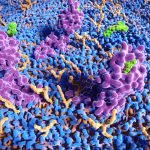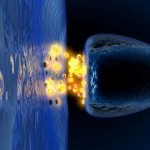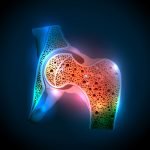Clinical Rounds in Functional and Nutritional Medicine
Fatigue – Functional Hypothyroidism
David M. Brady, ND, DC, CCN, DACBN
Introduction
This is the first in a series of Clinical Rounds, which will be appearing as a part of ND News & Review. In these Clinical Rounds real case studies from my practice will be presented. It is my aim to present interesting cases, which will facilitate thought and discussion about novel diagnostic and therapeutic techniques for a myriad of clinical conditions that are likely to appear in your offices.
Patient Presentation and History
A 32-year-old female presented to my practice with the primary complaint of fatigue. Her entire symptom/complaint list was as follows:
- Fatigue
- Weight gain
- Coldness
- Eczema
- Hair loss
- Ankle swelling
- Hand and foot numbness
- Dizziness upon standing
- Chronic sinus infections
- PMS
- Breast tenderness
- Muscle pain
- Neck pain
The onset of her symptoms was approximately five years prior to presentation. Upon completing her medical history and questioning the patient carefully I learned that the onset of her fatigue and other symptoms correlated with a period of extreme stress in her life. In the year of onset she experienced the death of her father and a difficult non-viable pregnancy. She stated that she has been noticing hair coming out into her hairbrush at ever-increasing levels recently. She also felt “swollen” all the time, suffered from worsening PMS and breast tenderness associated with her cycle, dizziness upon standing, skin dryness, allergies, generalized muscle aches, and neck and shoulder tightness. Her hands also tended to “go numb a lot.” The patient had tried a plethora of diets to lose weight without success and freely admitted that she was a “carbohydrate junkie.”
Prior Management
The patient was previously seen by a physician who is a family friend. He ordered a basic thyroid panel including a TSH. While the lab analysis was considered normal by the pathological ranges set by the testing laboratory, the physician decided to put her on thyroid hormone replacement therapy (HRT) based on her subjective symptoms. She was prescribed levothyroxine sodium (Synthroid). The Synthroid did not seem to produce any dramatic results, even after the physician had increased the dosage several times. She was also given Zyrtec for her sinus congestion and allergies. A visit to a dermatologist resulted in a diagnosis of eczema. Eventually, a family member of the patient whom is a chiropractor and colleague of mine, informed her about our integrative medical practice and she presented to us for a second opinion and possibly an alternative approach.
Physical Examination
The patient had a somewhat swollen and bloated appearance. She was moderately overweight. Close examination of the patient’s head, neck, and face revealed that she had a significant loss of her lateral eyebrows (Hertoghe sign), coarse dry hair (no obvious hair loss), and an obvious bilateral swelling of the thyroid. Thyroid palpation did reveal fullness, but no masses, nodules, or tracheal deviation. Standard EENT examination was normal. However, upon exposure of the pupils to sustained light she exhibited an initial pupillary constriction, followed by significant dilation and pulsation, often a sign of adrenal stress. She had multiple silver amalgam fillings, as well as one gold crown (dissimilar metals). Heart evaluation revealed a normal rate and rhythm without murmur, and lung examination revealed normal breath sounds. Her seated brachial blood pressure was 108/68 mm Hg. Upon quickly standing from a supine position there was a 12 mm Hg drop in her systolic pressure and an 8 mm Hg drop in her diastolic pressure (+ Ragland’s test). Abdominal examination was essentially normal with the exception of mild tenderness to deep palpation in the RUQ and LLQ. A dry eczematous rash was observed on both arms. A basal temperature tracking sheet mailed to the patient and completed prior to her initial visit revealed an average morning axillary temperature of 96.2 degrees when performed on the first five days after the start of her menses. Musculoskeletal examination revealed multiple myofascial trigger points (TrPs) in the lower cervical and upper thoracic musculature, particularly in the bilateral upper trapezius muscles, which referred pain into the proximal upper extremities. Global restriction of cervical ROM was noted, with multiple areas of segmental dysfunction.
Initial Impressions
The presence of this many overlapping symptoms should always cause the functional medicine practitioner to consider a multi-faceted problem. It is tempting to recognize that the patient has a multitude of hypothyroid-related symptoms and to aggressively direct your therapy to the thyroid alone. The initial treating clinician did just that. However, he must be given credit for at least attempting thyroid HRT based on subjective symptoms alone and not just assuming that the patient was “normal” just because her labs were within normal ranges. The initial lab work-up by the conventional physician was useful in that it helped to rule out a significant primary central dysregulation of the thyroid and pointed toward peripheral resistance or a thyroid hormone conversion disorder as a more likely etiology for the low thyroid function. However, given the full array of endocrine-related symptoms seen in this patient (ie, PMS, breast tenderness, etc.) it is wise for the functional medicine practitioner to consider more foundational problems within the endocrine system. The correlation of her onset with highly stressful events, the dilation of the pupils to sustained light, postural hypotension, carbohydrate cravings, among others, suggests difficulties in the hypothalamic-pituitary-adrenal (HPA) axis.
Initial Diagnostic Work-up
Test Result
CBC and Serum Chemistry Panel: WNL
Serum Thyroid Antibodies: Negative (to r/o Hashimoto’s)
Adrenal Stress Test Elevated salivary cortisol throughout the midday and low DHEA-S
Discussion of Diagnostics
The CBC was performed in order to evaluate the patient for anemia due to the fatigue, as well as to check infectious status. The patient did not appear to be anemic or to have an acute infection. Serum chemistries did not reveal any significant internal pathology that would account for the patient’s fatigue and other symptoms. A standard thyroid panel with TSH was previously performed and was normal. Salivary cortisol and DHEA testing revealed elevated cortisol, depressed DHEA, and a lack of circadian cortisol rhythm.
Initial Therapeutic Plan
The initial therapeutic strategy was meant to balance the endocrine system, support proper adrenal and thyroid function, enhance immune function, provide rejuvenation of the skin, provide general nutritional support, and reduce musculoskeletal pain and instability. The patient was very interested in discontinuing thyroid HRT and her Synthroid was phased out over time with the assistance of the prescribing physician.
Intervention Goal
- Multi herbal adaptogenic* adrenal support
- Proprietary thyroid supplement* thyroid support
- Vitamin C adrenal/immune support
- MSM lotion skin health/itching relief
- GLA skin health
- Mycelized vitamin A/E skin health/breast pain
- HCL & Pepsin digestive aid/allergy
- Digestive enzymes digestive aid/allergy
- Stress reduction counseling adrenal support
- Light aerobic exercise stress reduction/wellness
- Physical therapeutics neck and shoulder pain
- Macronutrient-balanced elimination diet general/allergy/wt. loss
low simple carbs
moderate lean protein and complex carbs
monounsaturated fats
gluten and dairy elimination
Explanation of formulary products used
Multi-herbal adaptogenic
*Panax quinquefolius (American ginseng), Eleutherococcus senticosus (Siberian ginseng), Withania somnifera (ashwagandha), Rhodiola rosea, Glycyrrhiza glabra (licorice), P-5-P, R-5-P, folate, pantothenic acid, vitamin C, N-acetyl L-tyrosine.
Proprietary Thyroid Supplement multi-herbal and nutrient thyroid support product.
*N-acetyl L-tyrosine, iodine, selenomethionine, Panax quinquefolius (American ginseng), Coleus forskohlii, Zn, Cu, Mn, Cr, vitamin A.
Stress reduction and sleep counseling
Deep breathing exercises
Guided imagery instruction
Instructions on proper and predictable sleep (in bed by 10PM, up by 7AM)
Sun / light exposure first thing in morning with light activity
Physical medicine protocol
The patient was treated with Active Release Technique (ART), post-isometric stretching, and mild ischemic compression to the located TrPs in the cervical and upper thoracic musculature. Cervical and thoracic manipulation and mobilization techniques were used, in addition to home stretching and strengthening exercises.
6-Week Follow-up
- Less fatigue
- Slightly higher basal temps (96.8°F avg.)
- Improved exercise tolerance
Upon follow-up examination it was determined that the patient may benefit to a more significant degree by the addition of some level of thyroid HRT. It was decided to provide the patient with T3, as well as T4. The previously taken Synthroid, which is synthetic T4 only, was not providing any T3. Therefore, Synthroid is often ineffective for patients with a peripheral T4 to T3 conversion disorder, which can be due to persistent cortisol elevations. The patient did not want to use synthetic T3 (Cytomel) due to the reported side-effects (palpitations, etc.) and frequent dosing. She also expressed a strong desire to use non-synthetic compounds if possible. It was decided to use Armour thyroid at 1 grain per day. Her dosage was later increased to 2 grains per day in the morning.
12-Week Follow-up
- Dramatic reduction in fatigue
- Normalization of basal temperature (97.8°F avg.)
- Greatly improved exercise tolerance
- 12-pound weight loss
- Less hand and foot numbness
- Decreased ankle swelling
- Less hair loss (reported subjectively)
- Reduction in PMS symptoms and breast tenderness
- Reduction in neck and shoulder pain
Future Diagnostic Considerations
- Food intolerance and allergy testing .
- Comprehensive digestive stool analysis
- Heavy metal burden testing (provoked urine)
Discussion
It is disconcerting to most functional medicine providers just how mismanaged many thyroid disorders are by most conventionally trained physicians. I make this statement fully aware of the success of the conventional HRT approach when the thyroid problem is one of central dysregulation. That is, when the thyroid gland is truly not producing enough hormone (primary hyothyroidism), or when it is not being told to make enough hormone by the pituitary gland or hypothalamus (secondary or tertiary hypothyroidism). In these cases, the conventional approach, which is to give synthetic T4 therapy, often works just fine. These types of hypothyroid conditions are also quite accurately detected via standard thyroid laboratory assays designed to find dysregulation of the HPT axis (ie: low T4 and elevated TSH in the case of primary hypothyroidism). We have all been trained to detect these overt types of thyroid conditions before they result in overt myxedema, with severe symptoms and characteristic facial features.
However, many of our patients have more subtle, yet still very clinically significant conditions. Problems such as thyroid hormone receptor insensitivity, or difficulty in the conversion of T4 (a relatively inactive hormone) into T3 (the main acting thyroid hormone) in the peripheral tissues, are examples of disorders often referred to as sub-clinical hypothyroidism, functional hypothyroidism, peripheral thyroid disease, low T3 syndrome, euthyroid sick syndrome, or Wilson’s syndrome. Standard lab assays often do not pick these variants of hypothyroidism up and conventional HRT may not work very well at all.
T3 5 deiodinase
When the body peripherally converts T4 to either active T3 or inactive reverse T3 (aka: rT3), the proper ratio of the two products must be maintained. Perturbations in cortisol levels due to stress, Cushing’s disease, or the overuse of exogenous cortizone-based drugs, can tip the scales toward the overproduction of rT3, with a resulting low thyroid condition. Reverse T3 occupies a position on the cellular nuclear receptor, but does not provide much in the way of thyroid drive. This phenomena has been well studied in patient populations who develop hypothyroid-like symptoms post-surgically, but who maintain normal blood thyroid studies (aka: euthyroid sick syndrome). Clinically, those of us in ambulatory practice seeing chronically ill and fatigued patients have observed this phenomena in relation to all types of stressful events (ie, pregnancy, divorce, loss of a loved-one, physical trauma, psychological trauma, etc.). Lower levels of chronic stress, such as poor dietary and lifestyle habits, digestive problems, leaky gut, toxicity, food intolerance, and a plethora of other problems, can all have a cumulative effect, inducing adrenal dysfunction via up-regulation of the HPA axis, and ultimately contributing to a peripheral thyroid condition. The resulting hypothyroid state produces low body temperature, which can lower the efficiency of virtually every enzyme utilized in our internal biochemistry. This provides an explanation for the far-reaching symptoms of hypothyroidism, including a multitude of musculoskeletal complaints. The overproduction of cortisol can also imbalance all hormonal products of the cholesterol- synthesis pathways, such as androgens and estrogens. This may result in PMS, menstrual irregularity, difficult menopause, and a host of female-related problems in addition to thyroid dysfunction. Of recent interest is cited studies out of Europe and Japan implicating immune complexes created from food allergens (ie, gluten) and gut pathogens (ie, Yersinia enterocolitica) in stimulating an autoimmune process against the thyroid tissue, as in Hashimoto’s thyroiditis, which can ultimately produce a significant hypothyroid state.1-3 Celiac patients are known to have approximately ten times the rate of immunogenic thyroid disease as compared to normal controls, further implicating gluten and other food allergens in thyroid disorders. Therefore, a comprehensive functional approach is essential in overall patient management of thyroid, adrenal, and other endocrine disorders.
Conclusion
This particular patient has not had a significant return of her symptoms to date with the outlined treatment approach. However, it would have been my preference to evaluate her intestinal health, detoxification ability, and food intolerance using ALCAT technology in order to provide the patient with the most comprehensive solution to her condition, particularly in light of the dermatological manifestations. In this case, the patient had such dramatic improvement in her overt symptoms with the initial intervention she did not opt for these additional evaluations. Her case was chosen in order to illustrate the importance of the accurate detection and management of functional endocrine disorders in our patients with chronic health problems. This case also serves to outline the integrative functional medicine approach to the management of the fatigued patient. Intestinal health, digestive function, detoxification, intolerance and endocrine function all need to be considered for evaluation. Treatment should be directed based on the findings in order to comprehensively treat these difficult conditions, which often defy a clear diagnosis in the conventional medical paradigm.
For a more comprehensive look at functional hypothyroid disorders please link to publications on the topic via my web site at: http://www.DrDavidBrady.com/
I encourage and welcome questions and comments regarding this case, as well as other clinical issues. Please direct your questions to me at: [email protected]
Dr. Brady is a Naturopathic Physician, a Board Certified Clinical Nutritionist, and a Doctor of Chiropractic. Dr. Brady is the Chief Medical Officer of Designs for Health, Inc. He is also presently the Director of the Human Nutrition Institute at the University of Bridgeport, and an Associate Professor of Clinical Sciences at the University of Bridgeport, Colleges of Naturopathic Medicine and Chiropractic in Bridgeport, Connecticut. Dr. Brady also maintains a private practice at The Center for the Healing Arts in Orange, CT, where he specializes in “Functional and Metabolic Medicine”. Dr. Brady has been a product formulator and technical consultant to various nutraceutical companies and clinical laboratories for the past ten years.
References:
- Takuno et al. Prevalence of Yersinia antibodies in thyroid disorder patients. Endocrinol Jpn 1990 Aug;37(4);489-500.
- Stunzner et al. Antibodies to Yesinia enterocolitica in immunogenic thyroid disease. Acta Med Austriaca 1987;14(1):11-4.
- Tomer et al. Infection, thyroid disease, and autoimmunity. Endocrine Rev 1993 Vol 14, No 1.






